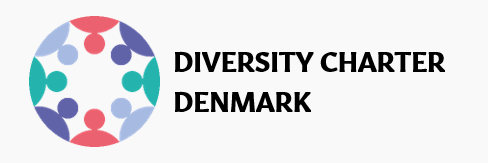The House of Disability Organizations: The World’s Most Accessible Office Building
Only 58% of Danish people with disabilities aged 16 to 64 are employed, compared to 84% of the population without disabilities (VIVE 2019). In Høje Taastrup lies the House of Disability Organizations, built on the principles of universal design, demonstrating how architecture and construction can help break down barriers for people with disabilities and create more diverse workplaces.
Jesper Mathiesen works as a member consultant at the National Organization for Citizen-Controlled Personal Assistance (LOBPA), which, along with several other organizations, is based in the House of Disability Organizations. For Jesper, who uses a wheelchair, it means a lot to work in a place where various disabilities have been considered in the design of the physical space. It’s especially the wide rooms, automatic door openers, elevators, and the rest room for his assistant that make a difference for Jesper and his work life.
“It means that I am much more self-reliant,” says Jesper Mathiesen.
At his previous workplace, the physical conditions created various challenges — for example, there was only one accessible toilet, which Jesper always had to go to the other side of the building to use. That’s not the case at the House of Disability Organizations, and Jesper appreciates that more equal solutions have been considered.
“It’s great that we use the same entrance and eat in the same canteen. Consideration has been given to everyone, and it’s done in a nice way, even though it’s disability-friendly. It’s not something you even think about,” he explains.
What makes the House of Disability Organizations special
Contrast colors and guiding lines for the visually impaired, a clear floor plan that considers cognitive disabilities, foot pedals at all elevators, and universal emergency plans — these are just some of the inclusive design solutions the office building features.
The entire construction process followed the principles of universal design. In other words, the focus was on creating physical spaces that can be used by everyone, including groups often overlooked when it comes to accessibility. This is explained by Maria Holsaae, chief consultant for accessibility to the built environment and the area of children with disabilities at the Danish Disability Organizations, which is behind the project.
“Everyone is considered in the building — both people with and without disabilities, not just physical disabilities but also cognitive ones.”
In addition to creating opportunities for everyone to participate, the focus was also on ensuring equal solutions. This can be seen, for example, by stairs and elevators meeting at the same point and the reception desk being on multiple levels so that wheelchair users and people of short stature can access it on equal terms with others.
While it may sound both extensive and expensive, Maria Holsaae emphasizes that building universally rather than conventionally does not mean compromising on price or aesthetics.
“It is a construction project that shows it is possible to build accessible and universal buildings that are both beautiful and affordable. It shows what the future can look like.”
Ditch the prejudices and focus on solutions rather than limitations
As a wheelchair user, Jesper has struggled to enter the job market. He applied for 70-80 jobs before securing a position, and the physical environment was often the reason for rejections. Although the physical environment is important, Jesper believes that companies‛ attitudes toward people with disabilities are even more crucial.
“Ditch the prejudices and be more open. Trust that the person you hire knows their disability and what it requires. Focus on their professional skills instead,” is Jesper Mathiesen’s best advice to other employers.
Maria Holsaae also believes that prejudice is the biggest barrier, and that fear of the unknown and lack of knowledge can make hiring someone with a disability seem like a much bigger challenge than it really is. Regarding the physical space, both Maria Holsaae and Jesper Mathiesen agree that you don’t need a brand-new office building to create a more inclusive workplace. Small adjustments in existing buildings can also make a big difference.
“It’s often just small things that are needed. Sometimes, it could simply be a ramp,” says Jesper Mathiesen, and Maria Holsaae adds, “A lot can be done with colors and lighting — even in older buildings.”
Learn more and get inspiration for your workplace
Not all companies have the resources or need to build new facilities based on universal design principles, but even small steps can make a difference. Find inspiration at www.rumsans.dk, a knowledge portal about universal design. You can also read more about the House of Disability Organizations or take a virtual tour at www.handicap.dk/huset.
Translated from Danish to English by Foreningen Lige adgang.
